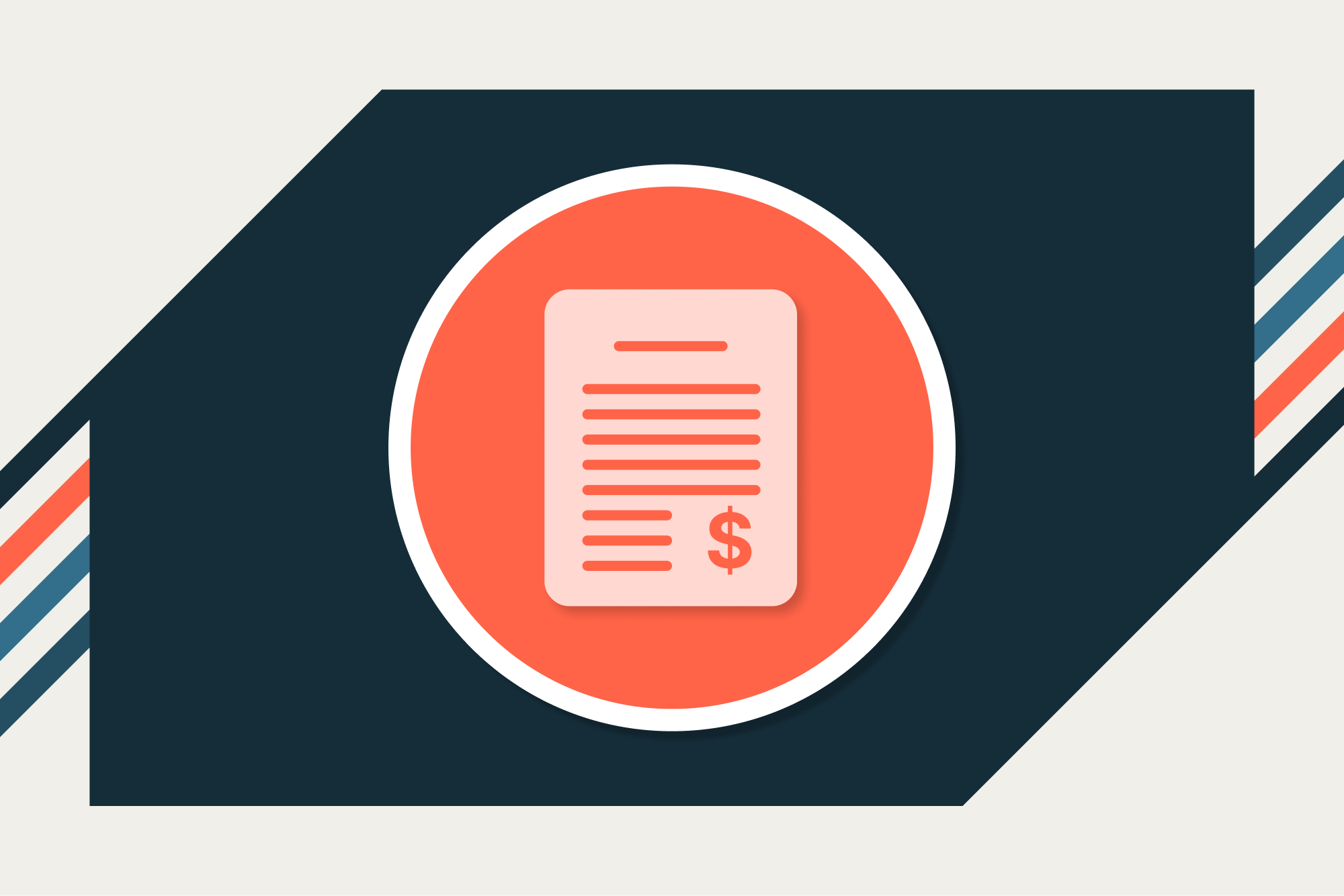Anyone who works in accounts payable (AP) or accounts receivable (AR) knows that effective invoice management is crucial for maintaining a healthy cash flow. But a high number of open invoices can affect everything from financial forecasting to overall financial health.
Here, we’ll look at the specifics of open invoices, including the different types, how they can impact your business, and tools that can help you keep track of unpaid invoices and ensure they’re paid on time.
What are open invoices?
Open invoices refer to unpaid or unsettled invoices awaiting payment or processing within the accounts payable (AP) cycle. Sellers issue these invoices, but the buyer still needs to pay, representing an outstanding balance in the seller’s accounts receivable.
Understanding and effectively managing open invoices is critical for maintaining smooth cash flow and financial clarity within your organization. By keeping a close eye on outstanding invoices, businesses can budget their expenses, identify potential payment issues, and take proactive measures to ensure timely payment.
Efficient open invoice management also helps strengthen vendor relationships and customer satisfaction. Timely processing of vendor invoices demonstrates that a business is committed to meeting its financial obligations, while prompt follow-up on customer invoices encourages timely payments and fosters trust.
Open invoice vs overdue invoice.
Businesses often use the terms “open invoice” and “overdue invoice” interchangeably, but they’re actually two very different things.
An open invoice is one that still needs to be paid but isn’t overdue yet. In other words, the payment deadline stated on the invoice hasn’t passed. This is different from a pro forma invoice, which is a preemptive quote for services that haven’t been provided yet.
An overdue invoice, on the other hand, is one where the payment deadline has passed without receipt of payment. Past-due invoices can lead to late fees or penalties and may harm vendor relationships.
While it’s best practice to pay invoices promptly (and it may net you a discount), you have some flexibility within the payment window. But letting invoices become overdue can affect your creditworthiness, standing with the vendor, and financial health.
How are open invoices handled in the accounts payable cycle?
Invoice processing and management are key aspects of the AP cycle, and open invoices require a systematic approach to ensure timely and accurate payment. There are several steps to the process, including:
- Invoice intake and logging into your accounting software.
- Reconciliation by cross-referencing invoices with corresponding purchase orders and delivery confirmations.
- Invoice approval through the appropriate channels.
- Initiating a credit card or bank transfer payment to the vendor.
If that sounds like a lot of work just to pay one invoice — it is! And while the majority of organizations still manage these processes manually, many businesses have adopted automated accounts payable solutions like Airbase to streamline AP processes and reduce manual action.
The automation provided by these systems significantly reduces manual efforts by digitally capturing and processing invoices, autonomously comparing them against purchase orders and receipts, and automating approval workflows.
With a powerful, modern AP automation solution, you can ensure payment speed and accuracy and keep open invoices from becoming past-due invoices.

AP Automation Tour
Explore 3-way matching in our AP Automation Product tour.
Types of open invoices.
Of course, open invoices have some nuance to them, and you can further break them down into the following categories:
- Outstanding vendor invoices: These are unpaid but not overdue amounts owed to suppliers for delivered goods or services rendered.
- Pending payments: An online payment has been initiated from the customer’s bank account, but it hasn’t yet landed in the vendor’s bank account or been processed by their accounts receivable department. Note that there are two subcategories here: online pending payments and offline pending payments. The latter occurs when the payment processing software is offline, but the payment will go through once a connection is reestablished.
- Incomplete payments: Incomplete invoices reflect scenarios where a buyer only pays a portion of the amount due, leaving an outstanding balance. These situations often arise from billing errors, contested charges, or agreed-upon payment plans.
Why is it important to close out your open invoices?
A high number of outstanding invoices may result in liquidity challenges, which cause delays in meeting financial commitments and hinder operational flexibility. They can also lead to inaccuracies in financial statements, complicating financial planning and risk management.
On the other hand, prompt settlement of invoices, resulting in a closed invoice, enables businesses to maintain a clear view of their financial position for more informed decision-making and strategic resource allocation. It also fosters better relationships with suppliers and partners. When vendors can count on you to pay invoices quickly and accurately, they’re more likely to offer favorable terms, outstanding service, larger lines of credit, and even discounts.
Conforming to contractual obligations and industry standards is another compelling reason for timely invoice management. Unresolved invoices introduce compliance risks, potentially leading to legal disputes or service interruptions. By adhering to agreed-upon payment terms and maintaining meticulous records, businesses can ensure that they meet all regulatory requirements and uphold their reputation as reliable partners.
Missed discounts on overdue invoices.
Early payment incentives promote punctual payments and also deliver direct cost savings. Missing out on these discounts due to late payments or procedural gaps can lead to avoidable expenses and overlooked financial advantages.
2/10 Net 30 discounts.
The 2/10 Net 30 discount offers a 2% reduction on the invoice total if buyers remit payment within 10 days, as opposed to the standard 30-day term. This discount encourages businesses to prioritize early settlements. Failing to take advantage of this opportunity can result in increased expenses, as the discount effectively reduces the payable amount. Over time, the savings from these discounts can be substantial.
1/15 Net 30 discounts.
Similarly, the 1/15 Net 30 discount provides a 1% deduction for payments made within a 15-day window. Although the percentage is smaller, it still offers significant savings, especially for companies with high transaction volumes. Over a fiscal year, these incremental savings accumulate, positively impacting the business’s financial health.
Businesses that employ AP automation solutions to streamline payment processes find it easier to capitalize on early payment opportunities, maximizing the benefits of available discounts.
The importance of open invoice reporting.
Open invoice reporting, managed by the accounting department, offers deep insights into financial operations and serves as a proactive tool for managing outstanding invoices. It provides a detailed snapshot of all unpaid invoices from a centralized dashboard so businesses can swiftly identify discrepancies and inefficiencies at every stage in the invoicing process. This leads to better:
- Financial transparency: Tracking financial obligations enables leaders to forecast financial needs and resource allocation accurately. Accurate forecasts support data-backed financial planning and cash flow management.
- Risk management: Detailed reports reveal payment patterns, allowing businesses to identify frequent transaction delays and take proactive steps to optimize their processes. This leads to fewer overdue payments and better cash flow.
- Compliance and audit-readiness: Meticulous records of all transactions protect businesses from compliance and regulatory issues. Access to a central repository of these records keeps you ready at a moment’s notice for any potential audits, safeguarding your reputation and operational integrity.
Advanced solutions like Airbase amplify these advantages by creating a reporting framework that’s easy to interpret. Airbase provides sophisticated analytics tools that generate comprehensive reports, offering a clear view of your company’s financial status. With these insights, your business can address and pinpoint inefficiencies within its financial workflows.
Modern software solutions for open invoices.
Navigating the complexities of invoice management calls for innovative software solutions that enhance operational efficiency. These platforms simplify the accounts payable process with automation technology. By adopting these solutions, companies can manage every aspect of the invoice lifecycle with precision and speed.
Key features to seek in software.
Not all financial systems are created equal — some have functions you can’t live without, while others offer nothing but fluff. When considering a new accounts payable software solution for your company, make sure it includes:
- Automated workflows: Automatic workflows enable a seamless invoice process through smart technologies that reduce manual intervention. These invoice automations support rapid and accurate transactions.
- Seamless integrations: Your AP software should integrate with other existing financial systems to maintain a cohesive ecosystem. API integrations enable real-time synchronization of all financial activities, providing a transparent view of your entire operation.
- Analytics and reporting: Insight-generating analytics tools reveal financial patterns and trends. These tools allow finance teams to get both granular and bird’s-eye views of invoice data, providing clarity on payment patterns and identifying areas for process improvement.
Airbase delivers all these features and more. It automates every step of the AP cycle, from invoice receipt to payment processing and reconciliation. The all-in-one platform also includes intuitive reporting to simplify invoice management while reducing errors.
What is open invoice testing?
Open invoice testing ensures businesses manage their financial commitments with precision. This testing methodology confirms that AP professionals systematically record and track open invoices within the company’s financial system to maintain the integrity of financial data. By adopting open invoice testing, organizations can preemptively address discrepancies and enhance the reliability of their accounting practices.
These discrepancies often manifest as incorrect entries or mismatches in invoice data, impacting financial records. To avoid these types of issues, conduct a thorough review of your AP processes to optimize operations and reduce the risk of inaccuracies in your financial documentation.
Another component of open invoice testing is verifying the seamless integration between invoice management software and existing accounting frameworks. Integrations facilitate the smooth transfer of data across systems, synchronizing real-time updates of financial activities.
Take control of your open invoices with Airbase.
Open invoices, as their name suggests, are the opposite of closed invoices. They’re invoices that still require payment but haven’t yet passed the deadline stated in the payment terms. Effectively managing open invoices is a key competency for your accounts payable department to ensure positive vendor relationships and healthy cash flow, but relying on manual processes introduces inefficiencies and potential errors.
On the other hand, using the right best practices, technologies, and testing makes open invoice management a whole lot easier — while reducing errors. With Airbase, you can automate every step of the AP process, from invoice capture to payment, ensuring nothing slips through the cracks. Gain complete visibility into your AP workflows, take advantage of vendor discounts, and close invoices with confidence.
Ready to simplify your open invoice management? Request a demo and see how Airbase can transform your AP process today.
 Jira Integration – Streamline Your Workflows
Jira Integration – Streamline Your Workflows  Ironclad Integration – Simplify Legal Operations
Ironclad Integration – Simplify Legal Operations  Asana
Asana 




